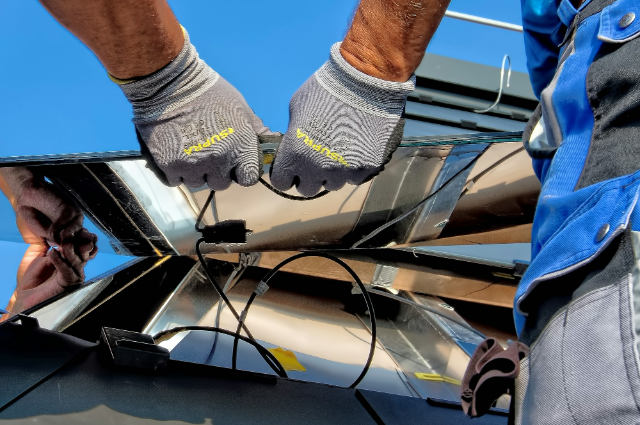
Photo by Ricardo Gomez Angel on Unsplash
Imagine a highway that does more than just carry cars. What if our roads could absorb sunlight beneath our wheels, generate electricity, and feed clean power into the grid? This futuristic idea is no longer just fantasy. Known as solar roads, it is being tested in many parts of the world as engineers and governments search for bold, permanent alternatives to fossil fuels.
The promise is simple yet powerful: transforming existing infrastructure into an energy generator and reimagining how we think about both transport and electricity. But the question remains—can highways truly power the future?
The Concept Behind Solar Roads
Traditional solar energy relies on rooftop panels or vast solar farms, both of which require dedicated land. Meanwhile, millions of square kilometers around the world are already paved with roads. If these surfaces could be converted into energy-producing platforms, society could harness land already in use, avoiding the need to clear new areas for solar development.
Engineers have proposed building durable, transparent road surfaces that allow sunlight to pass through to solar cells underneath. These cells would convert sunlight into electricity, which could then be stored in batteries, fed into the power grid, or even used to charge electric vehicles directly.
Scaling Projects to the Test
Several countries have already tested small-scale solar road projects:
- France (2016): The Wattway project, a one-kilometer stretch designed to power streetlights in a nearby village.
- China (2017): Built solar cells under transparent concrete in Jinan to power local infrastructure.
- Netherlands: Developed the SolaRoad bike path near Amsterdam, generating enough electricity annually to power multiple households.
While these early projects faced challenges such as high costs and durability concerns, they proved that the concept is technically possible and worth further exploration.
For governments and corporate boards, solar roads are appealing because roads are among the most land-intensive public properties. Giving them a dual purpose improves efficiency. Instead of demanding new plots for solar farms, solar roads utilize existing infrastructure to generate clean energy, aligning perfectly with sustainability goals.
Economic and Strategic Appeal
Governments and companies have pledged to reduce carbon emissions, and solar roads provide a visible, innovative way to showcase leadership in renewable energy. Cities could reduce municipal electricity bills by powering traffic signals, toll booths, and streetlights directly from solar roads.
In the long run, cost savings and collaborations with technology companies make solar roads attractive not only from an environmental perspective but also strategically and economically.
Everyday Applications
The potential applications are vast:
- Rural roads could both connect villages and provide clean electricity to nearby homes and schools.
- Urban highways could feed electricity directly into local power grids.
- Parking lots equipped with solar panels could generate power to charge electric vehicles during the day.
- Smart roads could integrate wireless charging for EVs, allowing them to recharge while driving.
- LED-embedded surfaces could display real-time traffic signals or warnings about icy patches, improving road safety.
Challenges and Limitations
Despite the promise, several challenges remain:
- High Costs: Constructing transparent, durable road surfaces that withstand heavy trucks is expensive.
- Maintenance: Repairing or replacing solar road panels is more costly than fixing traditional asphalt.
- Durability: Roads face constant wear from vehicles, weather, and dirt, which reduces solar efficiency over time.
- Efficiency Issues: Solar panels perform best when tilted toward the sun, but roads are flat and often shaded by vehicles
- Scaling Up: Expanding from pilot projects to full highways requires massive investments and long-term planning.
The future of solar roads will depend on innovation, supportive policies, and economic feasibility. Governments eager to meet renewable energy goals may continue to fund pilot projects while partnering with businesses in technology and energy sectors.
As climate change accelerates, communities will require transformative solutions to move away from fossil fuels. Solar roads may not single-handedly solve the global energy crisis, but they represent a powerful rethinking of how we use everyday infrastructure.
By turning passive roadways into active, energy-producing systems, solar roads embrace the innovation needed to combat climate change. If engineers can overcome cost and durability barriers, tomorrow’s highways may not just carry cars—they could carry the promise of a cleaner, greener future.
